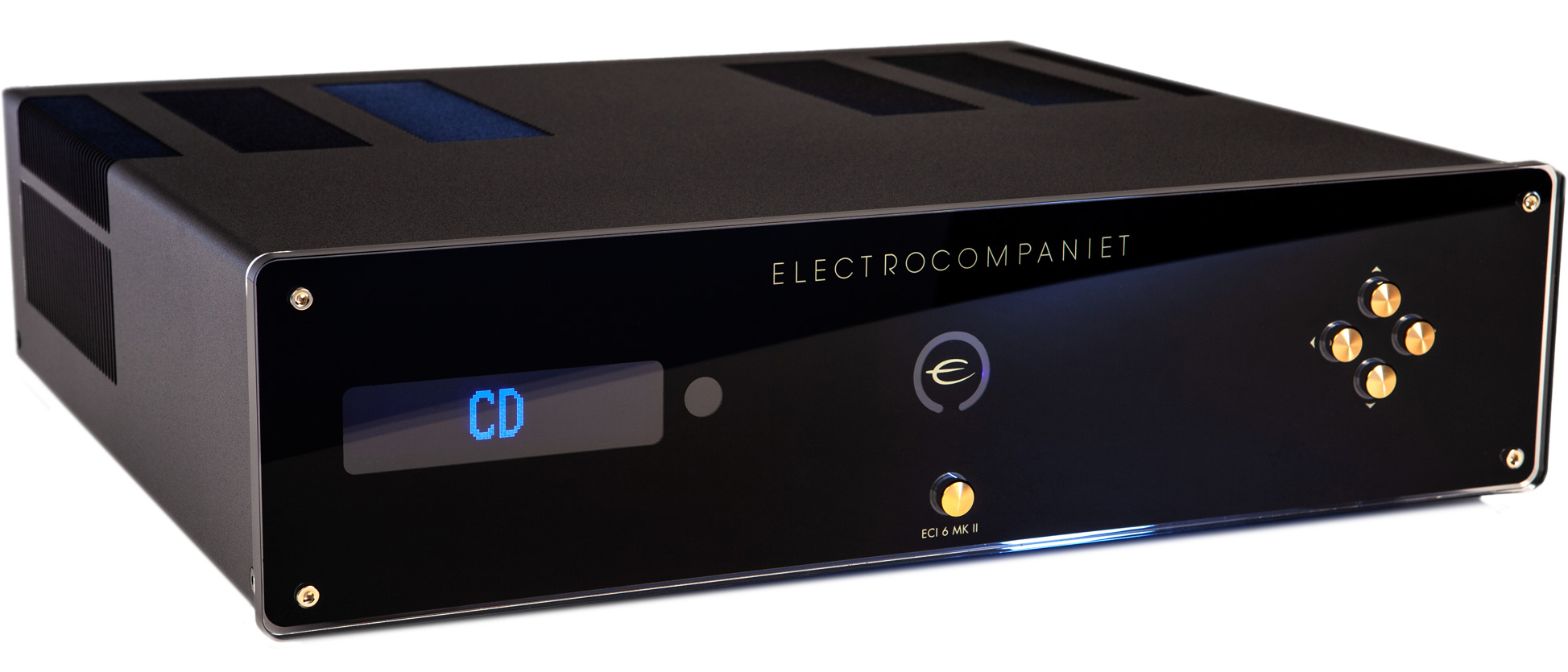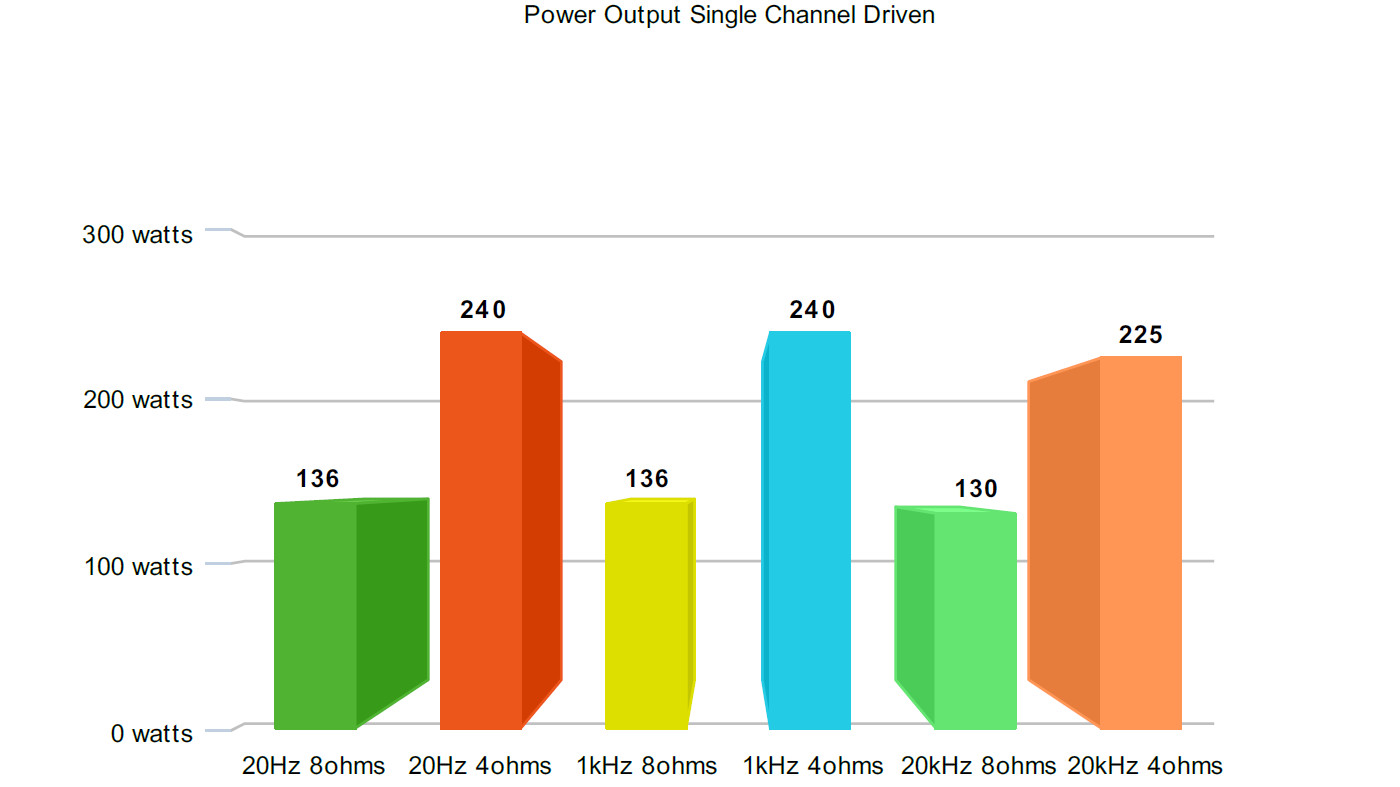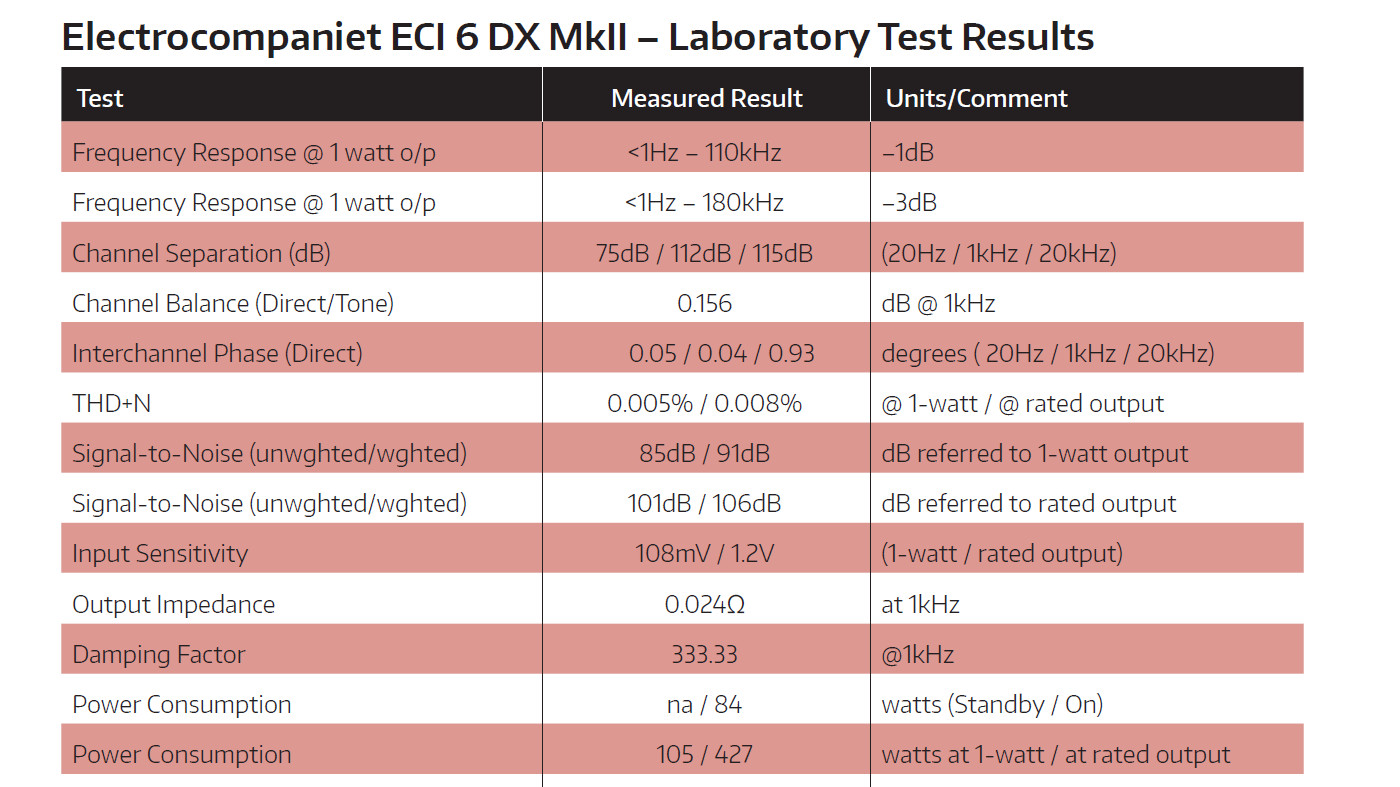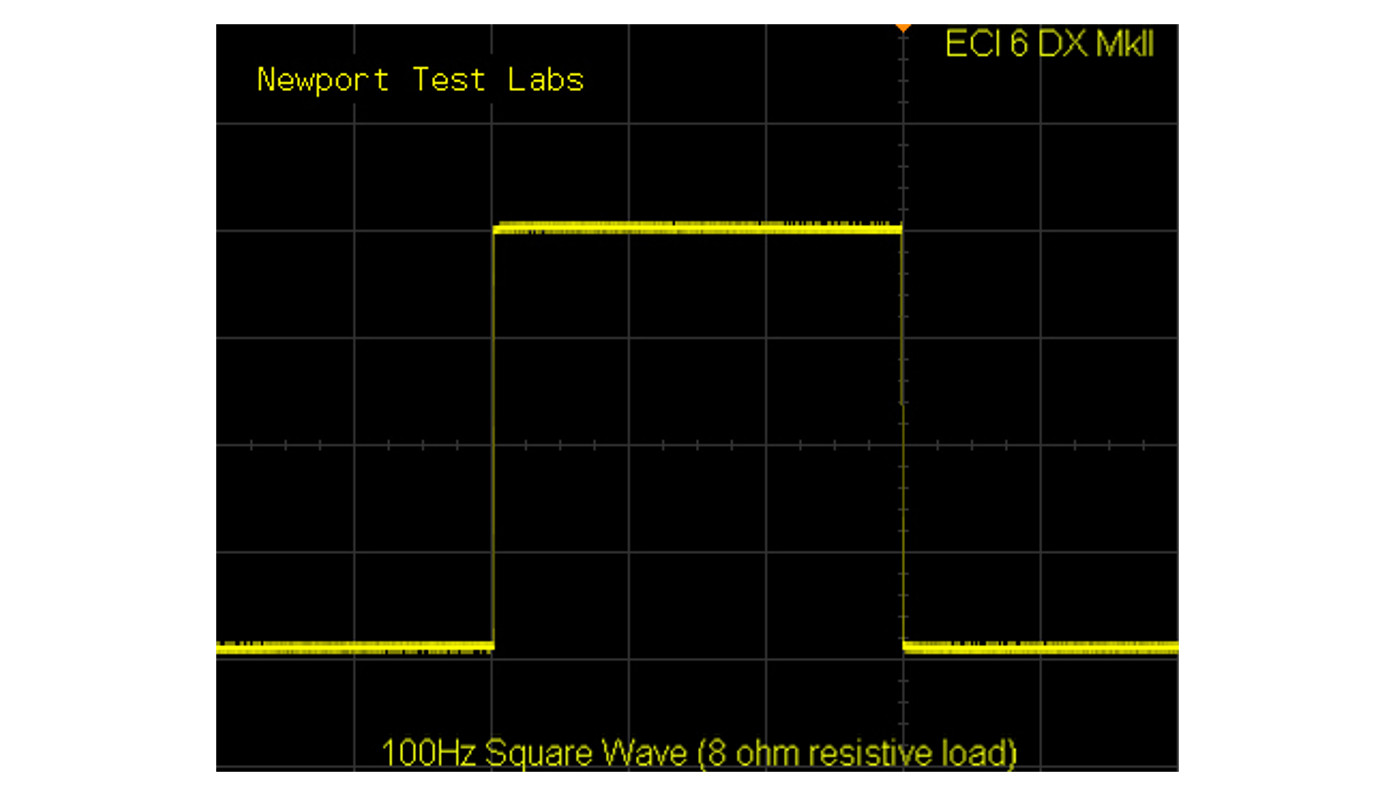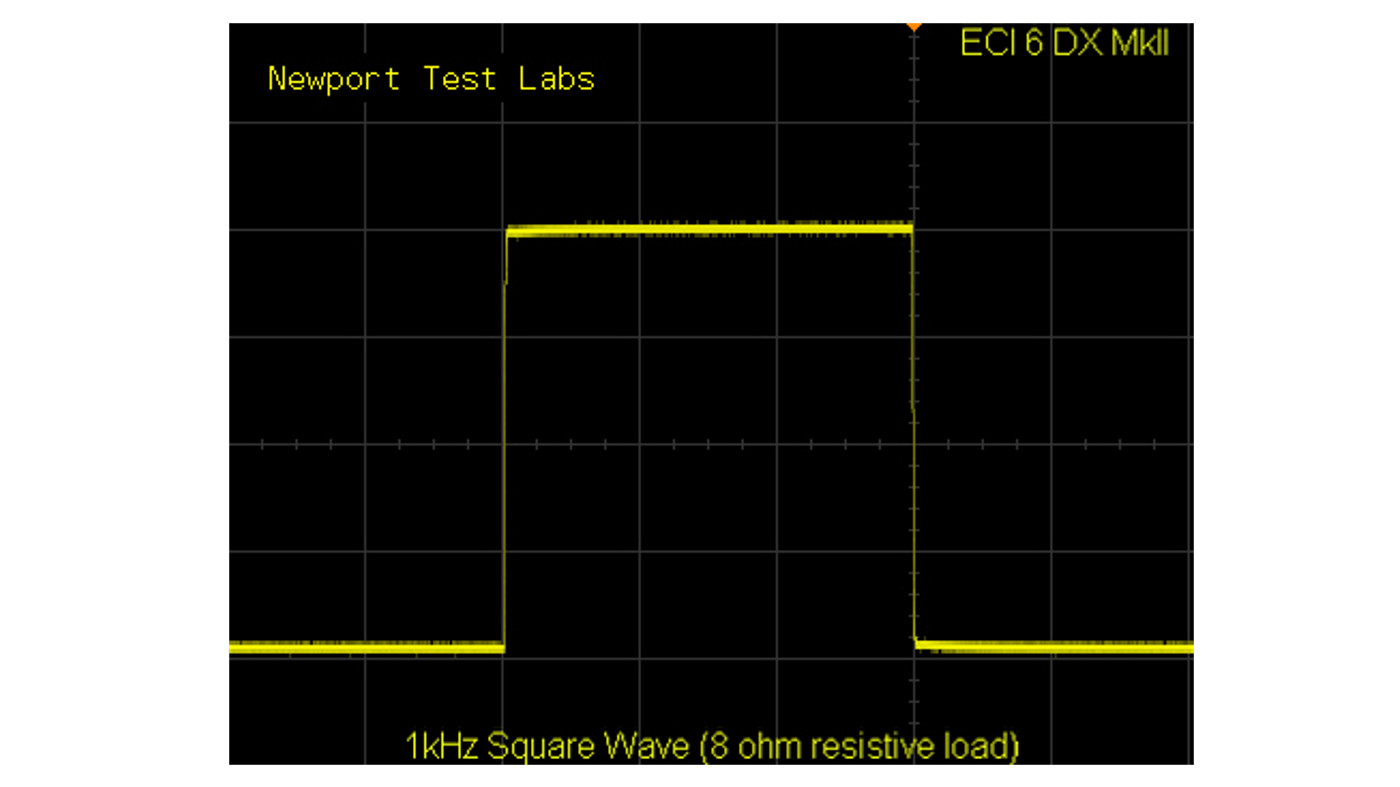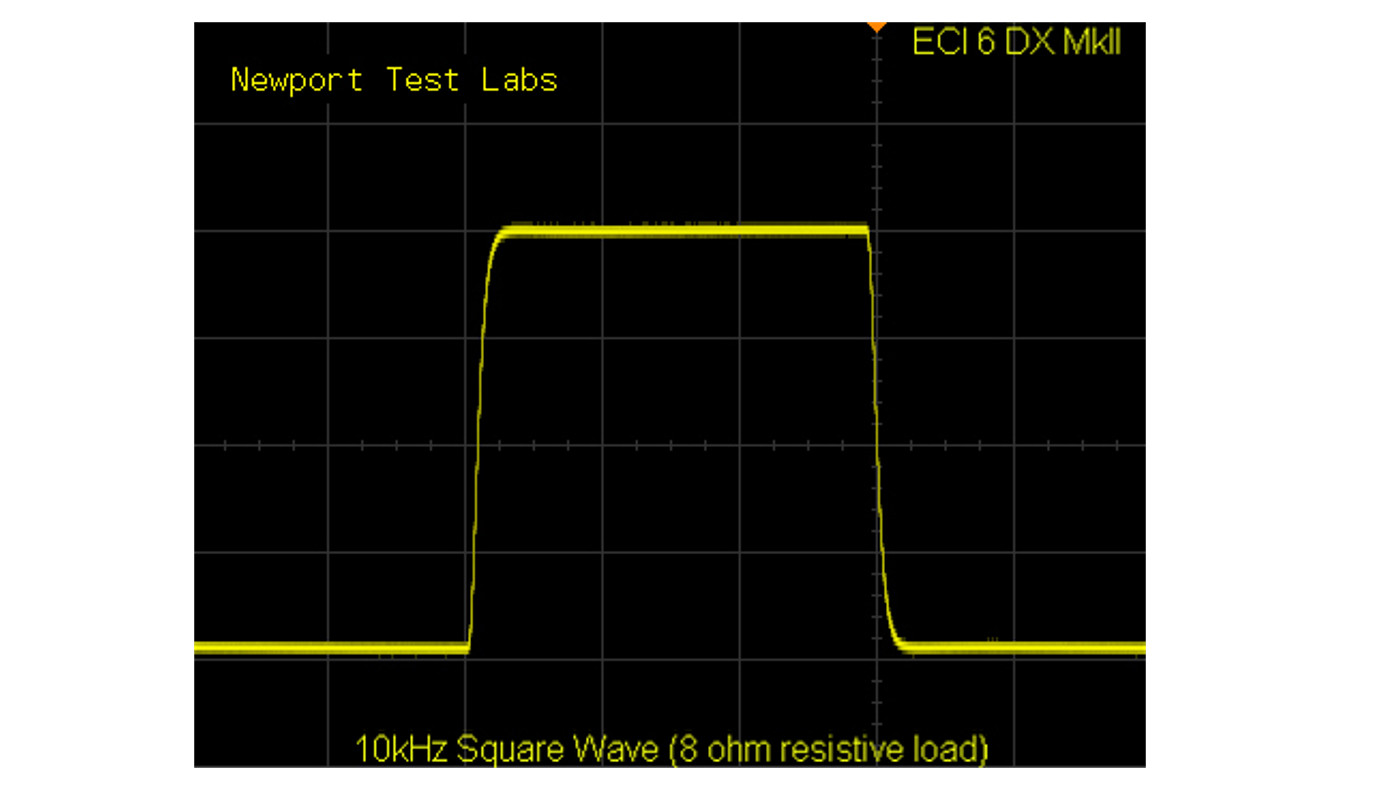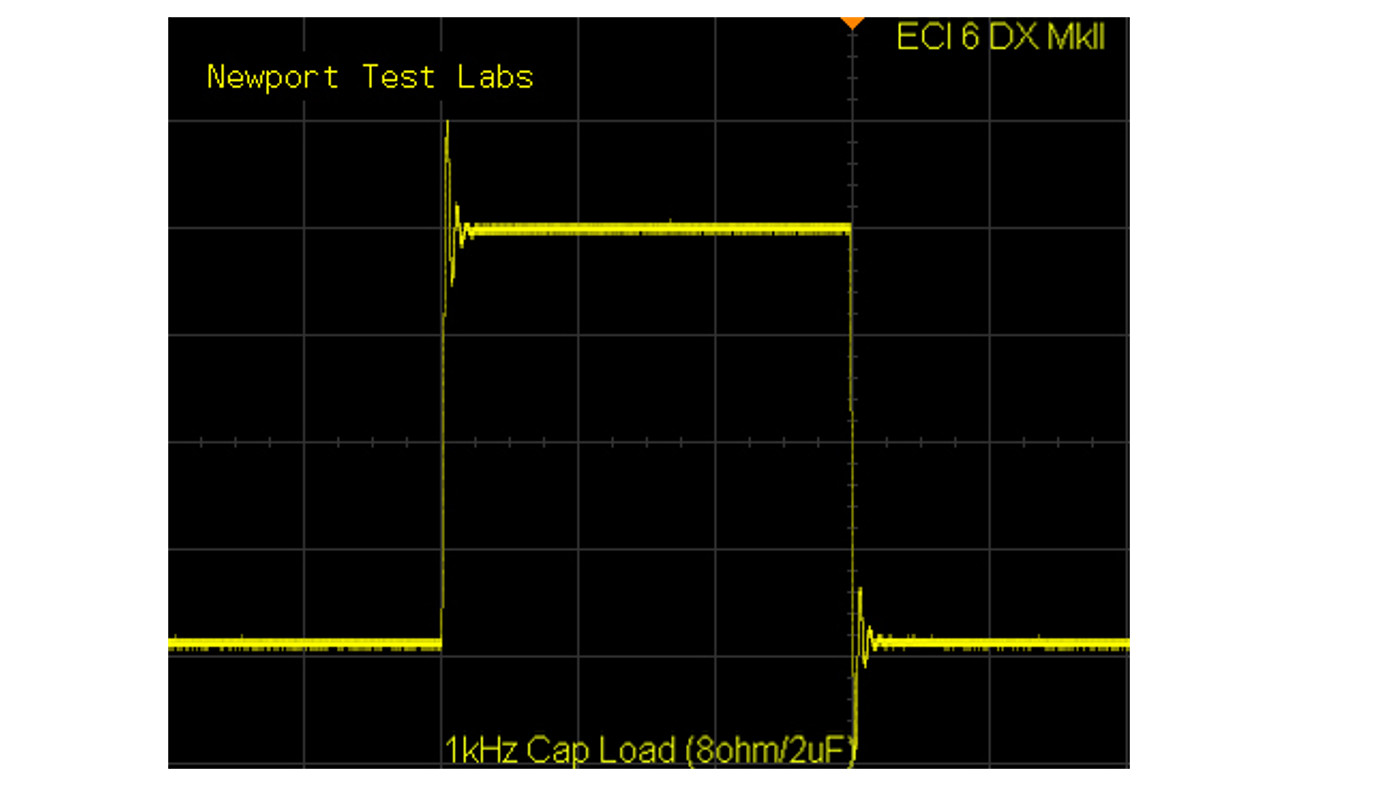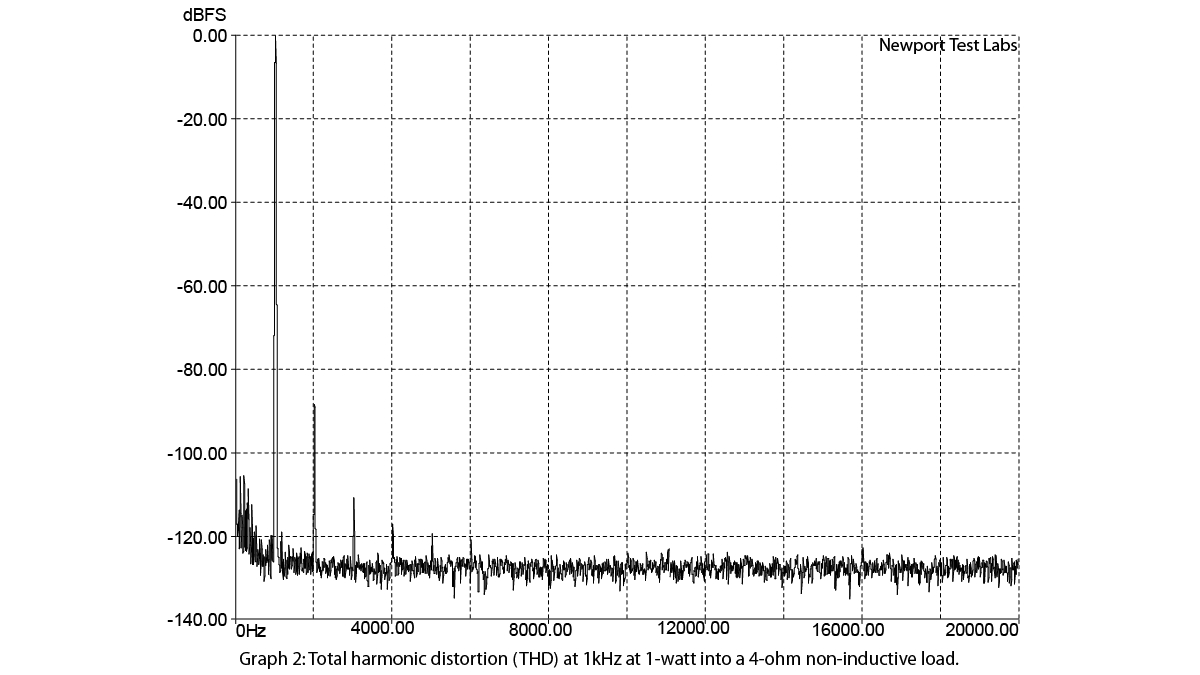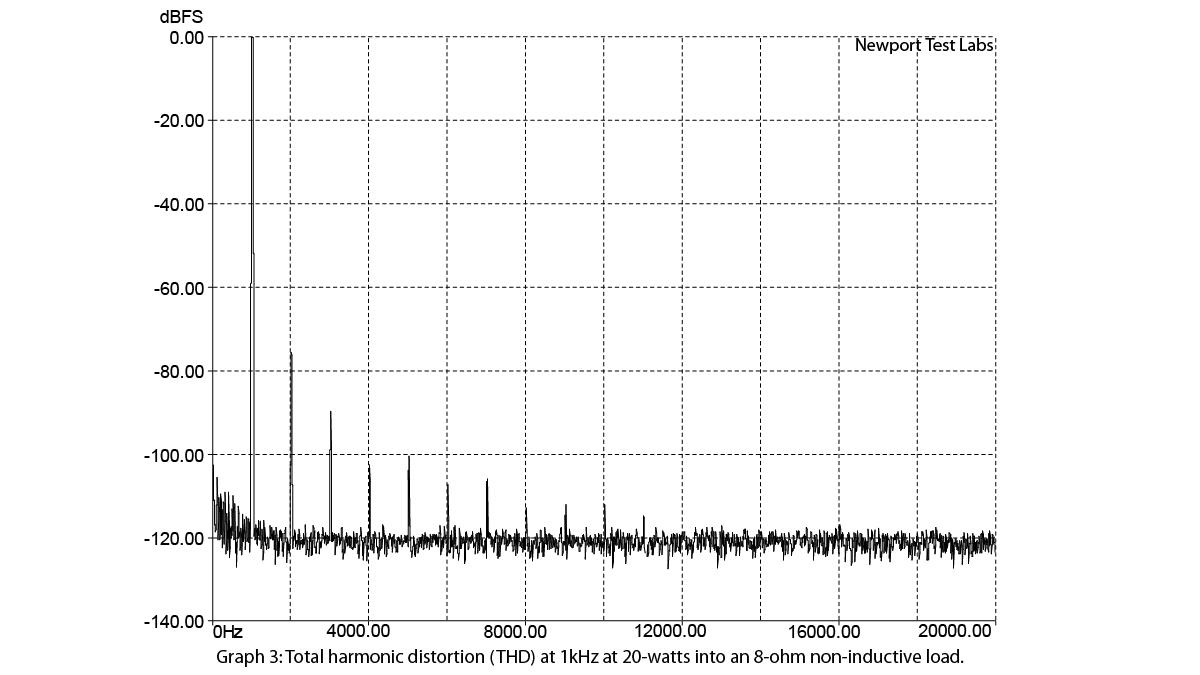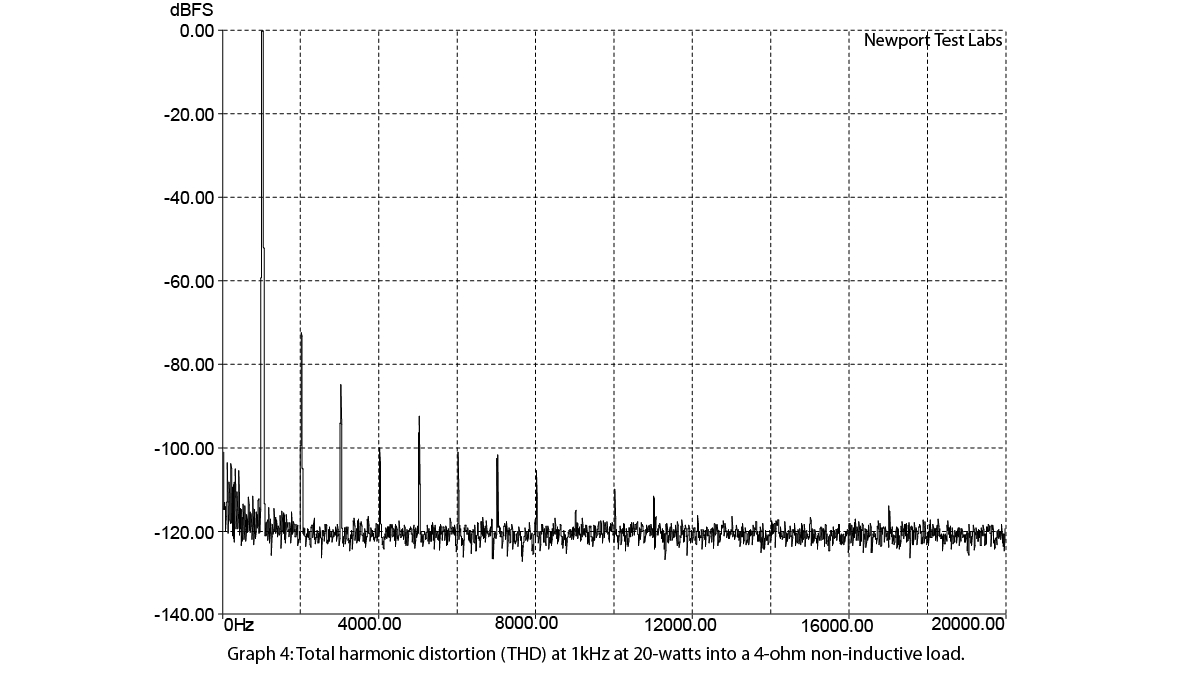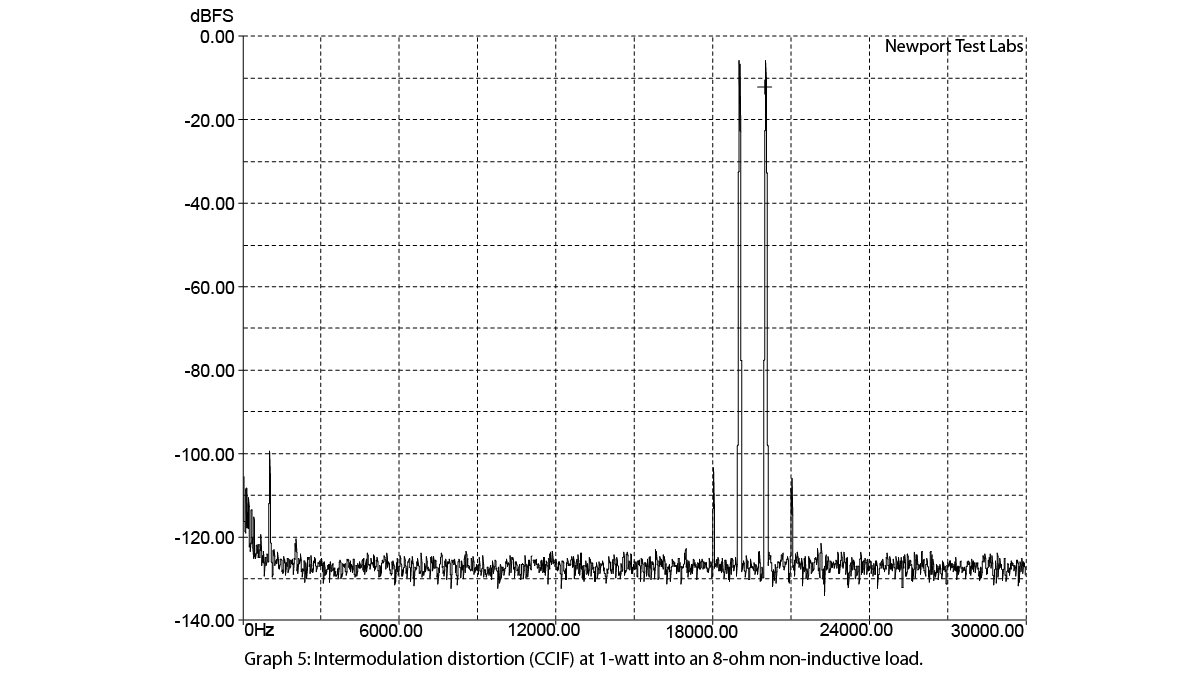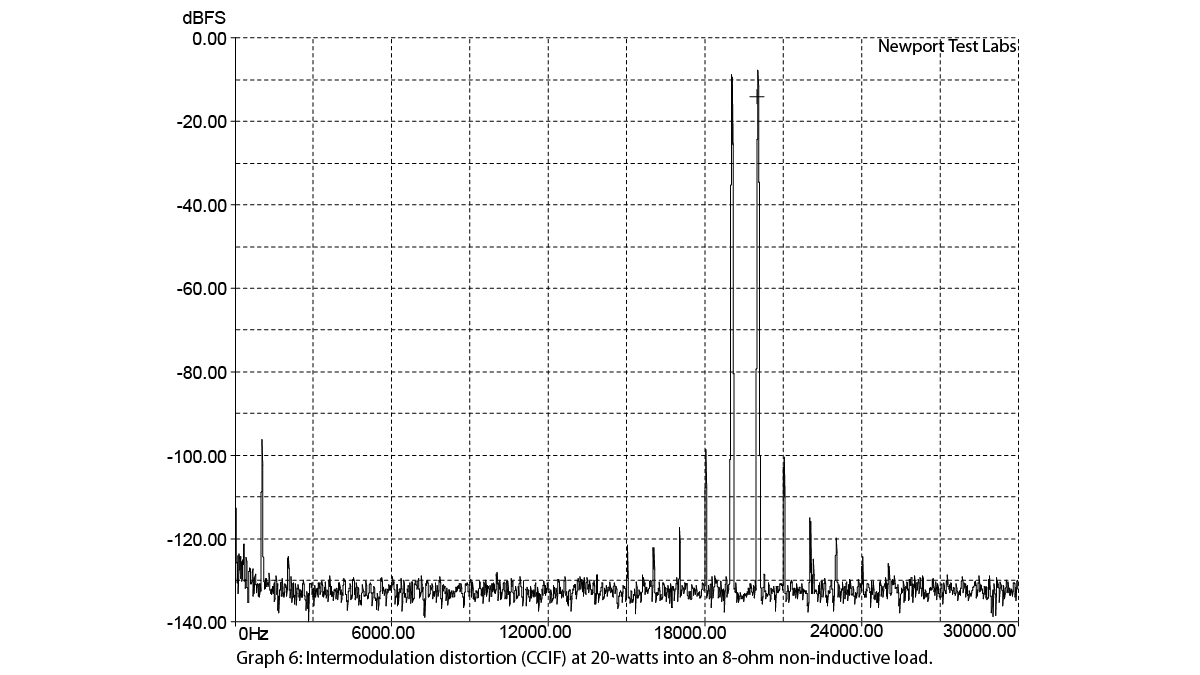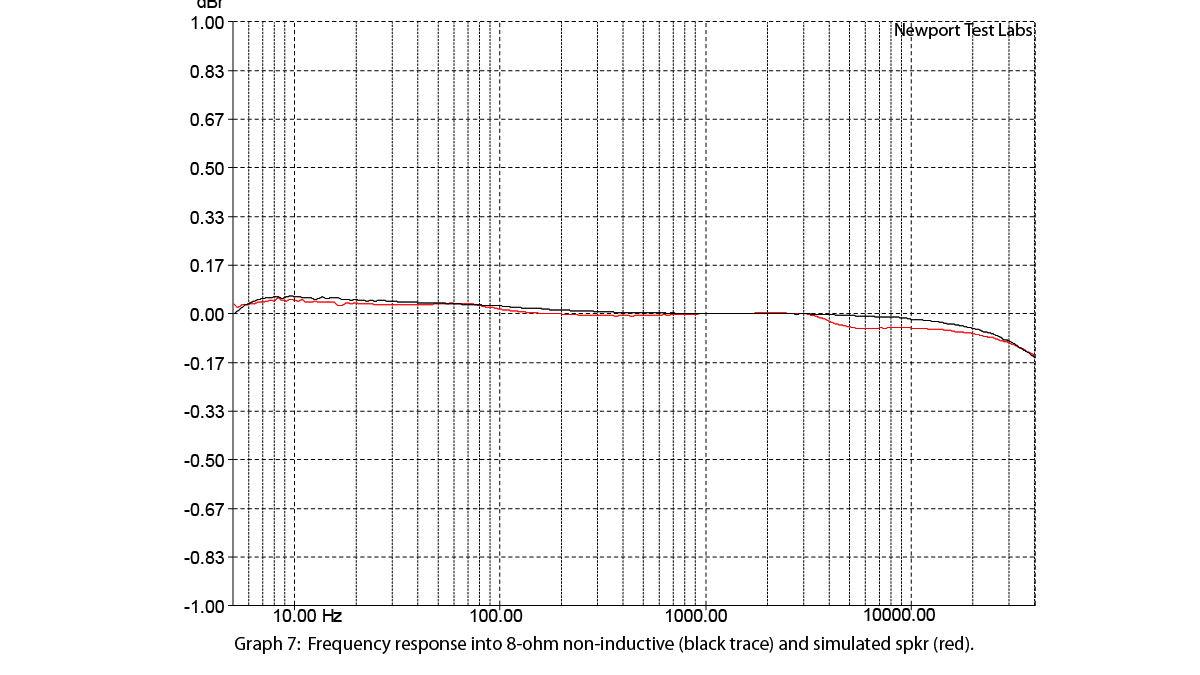What Hi-Fi? Verdict
The svelte and compact design of the Electrocompaniet ECI 6 DX MkII belies its raw power and incredible sound. Not only is it a great stereo amplifier, but it doubles as a DAC and streaming box as well. It's only let down by its rather imprecise volume indicator that isn't viewable from all angles, although it certainly is unique and pretty when it can be seen.
Pros
- +
Superb sound
- +
State-of-the-art design
- +
Does everything!
Cons
- -
Imprecise volume control
Why you can trust What Hi-Fi?

This review and test originally appeared in Australian Hi-Fi magazine, one of What Hi-Fi?’s sister titles from Down Under. Click here for more information about Australian Hi-Fi, including links to buy individual digital editions and details on how best to subscribe.
It was only after I pressed that golden power button in the centre of the EC’s front panel and saw the stylised ‘є’ that is Electrocompaniet’s logo flash into being in the display that I realised exactly how similar it is to the symbol that is used to represent the currency of the European Union: the Euro (€).
This could hardly be deliberate, since the Norwegian manufacturer was building amplifiers twenty years before the EU came into being. But it is bemusing, because Norway is still not a member of the EU, so the country’s currency remains the Krone, as it has since 1875.
Features
As the product name suggests, the Electrocompaniet ECI 6 DX MkII has it all! It’s not only a hugely competent integrated amplifier with a rated output of 125-watts continuous per channel into 8Ω, it’s also a full-featured digital-to-analogue converter and an equally full-featured streamer.
A power output of 125-watts into 8Ω from such a compact (and, it just has to be said, stunningly beautiful) chassis is an impressively high power output. But even more impressive is that it can also deliver 200-watts per channel into 4Ω loads and 370-watts per channel into 2Ω loads.
That 2Ω specification is particularly noteworthy, because very few – if any – integrated amplifiers can drive such low impedances at all, much less at power levels approaching 400-watts. It means that the amplifier can not only provide ample voltage to your speakers, but ample current as well. In fact, Electrocompaniet claims a peak current ability of more than 100-amps.

As for control, Electrocompaniet is one of the very few high-end manufacturers that provides both iOS and Android apps so that you can control the ECI 6 DX MkII not only from the supplied dedicated remote control, but also from your phone or pad. But that’s not all. This forward-thinking Norwegian company also allows control via a standard web interface, so you can use your computer to control it if you wish, and from anywhere in the world there’s an internet connection.
And when I say ‘control’ I am not just talking about control over volume, input selection and so forth, I’m talking about the ability to select, play and pause (etc) tracks from all of the most popular streaming formats and services, including Spotify, Tidal and Qobuz, plus the system also has built-in internet radio. You can also stream via Airplay and Bluetooth. It’s also Roon-ready as well, so if you subscribe to Roon, it will seamlessly connect and let you play and control it via Roon.
The latest hi-fi, home cinema and tech news, reviews, buying advice and deals, direct to your inbox.
The app in combination with Electrocompaniet’s ‘EC Software Engine’, which is built into the ECI 6 DX MkII also lets you index play, pause, (etc) tracks from your own music collection stored on your network.
It would seem that Electrocompaniet is expecting all owners to use one or more of these apps to control the ECI 6 DX MkII because the screen on the front panel is a relatively coarse dot-matrix display (dot size of around 1mm), blue on black, so the letters that indicate the active input – CD, DVD, AUX, HT, COAX1, COAX2, TOSLNK1, TOSLNK2, USB – have staircases in place of curves, but the letters are so large that they’re easy enough to read, even from many metres away.
The misspelling of Toslink1 and Toslink2 in the previous paragraph is not a typographic error. The display can show only seven characters, so they’ve had to abbreviate Toslink to Toslnk.
The characters are all upper-case, too, because of the display resolution. Curiously, however, if the HT input is muted the display will, when you select it, show HT (MUTED) with the ‘Muted’ all in upper-case, but in very small lettering, so the display itself is obviously capable of another, higher-resolution display mode.
The display shows only the input that is active; there is no digital indication of volume level. Instead, volume is indicated analogously – and rather ingeniously – via a method I cannot ever recall seeing previously.
Electrocompaniet’s engineers have put a motorised potentiometer behind the glass front panel and fitted it with a bright blue LED. So, as you raise and lower the volume, either via the ‘Up’ and ‘Down’ push-buttons on the front panel, or with those on the remote control (or via any of the other control methods), you can see the blue LED move clockwise (or anticlockwise) behind the front panel. At least you can if you’re directly in front of the amplifier.
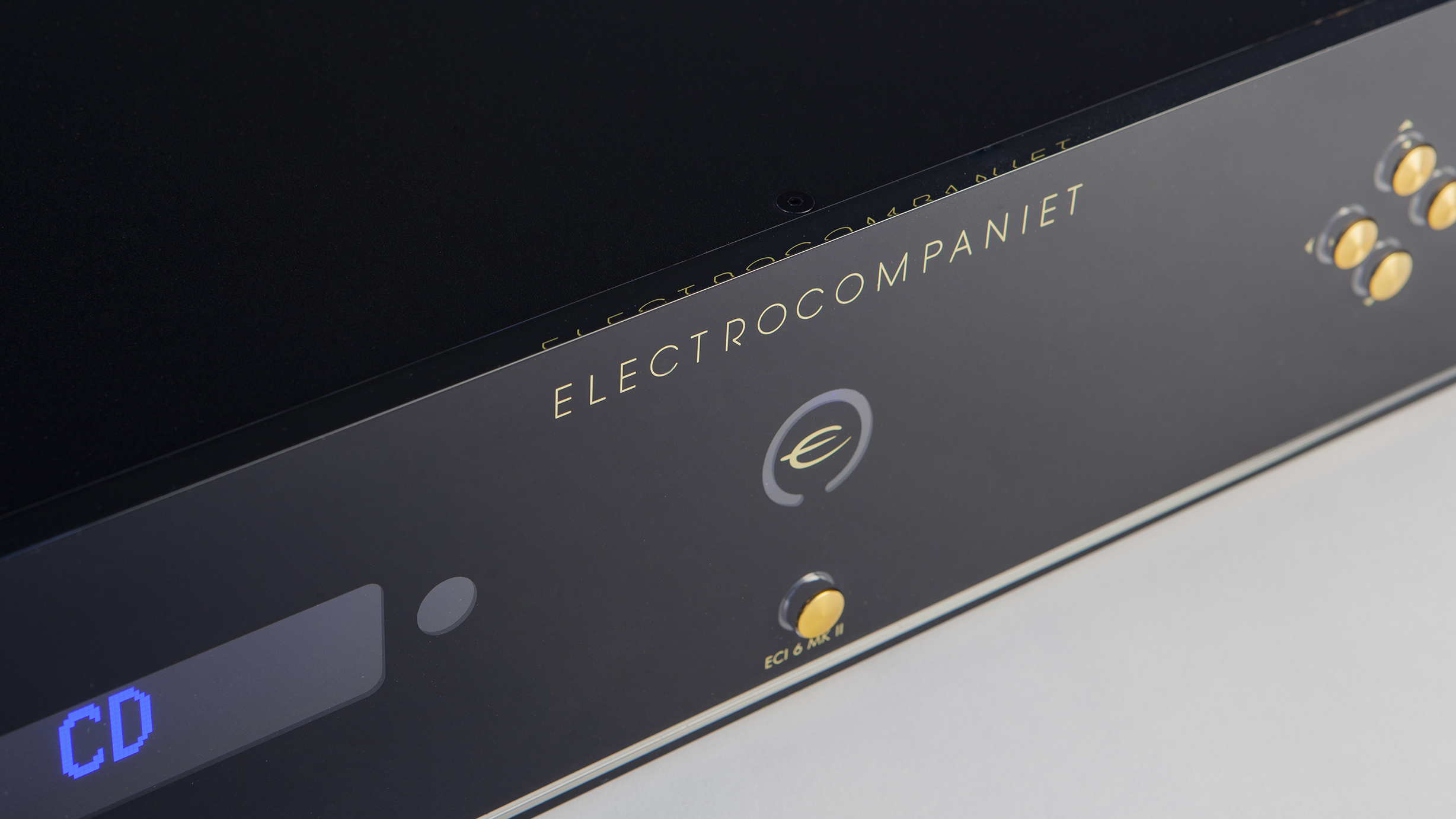
If you’re off to the left, you can’t see it at all. If you’re off to the right, you can see a faint blue halo reflection. If you’re above the amplifier, it really depends on the position of the LED as to whether you can see it or not.
Although this method of display is ingenious, it means that you can’t really get an identical listening level across multiple sources because you can’t say, turn the volume to 4, or 6, because there are no markings. The volume also doesn’t re-set itself when you power down. It always powers up at the same volume level that was being used when it was powered down.
Handily, if the amplifier powers up at a volume level you’re not comfortable with, you can use the ECI 6 DX MkII’s ‘Mute’ function to quickly drop it down. This circuit is perfectly implemented, so that when activated, the word MUTE shows in the front panel display. The circuit also correctly cancels itself whenever the volume is adjusted and also, of course, cancels itself whenever the amplifier is switched off.
I didn’t really like the fact that the power button is an old-fashioned make/break control, so if it’s in the ‘On’ position, the amplifier will power-up the instant the mains power is switched on (actually, not quite instantly, the ECI 6 DX MkII does a self-test routine first, which takes around 30 seconds) so my advice would be to get into the routine of reducing volume level to minimum before you switch the amplifier off.
As with all electronic components, you should get into the habit of switching the ECI 6 DX MkII to standby whenever you’re not using it. In something of a trap for young players, the bright red ‘Standby’ button on the ECI 6 DX MkII’s infra-red remote control does nothing at all. You instead have to press and hold the ‘Mute’ button on the remote for a couple of seconds to activate Standby mode.
On the digital side, the ECI 6 DX MkII will handle pretty much any kind of digital signal at all, right up to 24-bit/192kHz, in any format –WAV, PCM, FLAC, DSD128 (etc) – but check the specs to make sure your favourite format is there.
Listening
Whenever you turn it on, the ECI 6 DX MkII automatically defaults to the MEDIA input so it’s pretty obvious that Electrocompaniet thinks most users will be streaming their music, rather than hard-wiring it. So it would have been nice if the infra-red remote had a ‘MEDIA’ input selector. (Or failing that, that the Owners’ Manual had told me that you can access it by pressing the Stop/Eject’ button, because it took me quite some time to work this out for myself.)
Right from switch-on it was immediately obvious that the Electrocompaniet ECI 6 DX MkII isn’t just a pretty face. It was able to drive my hopelessly inefficient loudspeakers to more-than-adequate volume levels (much louder than I ever listen) without even raising a sweat (though the amplifier’s casing did become rather warm, so make sure it’s well ventilated).
It wasn’t just the power levels that impressed. The sound is so super-clean that distortion is clearly totally under control (i.e. inaudibly low) and the noise levels are also below the vanishing point. Whenever music wasn’t playing, I couldn’t hear a thing from my speakers – no hiss, no buzz, no unwanted background noise of any type whatsoever.
The Electrocompaniet ECI 6 DX MkII was not the first product of Norway to arrive in my home. I’ve been a fan of that country’s band Jaga Jazzist for many years. As their name suggests, they play a lot of jazzy music, but I wouldn’t categorise it as jazz myself, and they seem to change their style with each new album. You could start with their latest album (‘Pyramid’) but I’d recommend 2005’s ‘What We Must’ as the ideal entry point to their oeuvre.
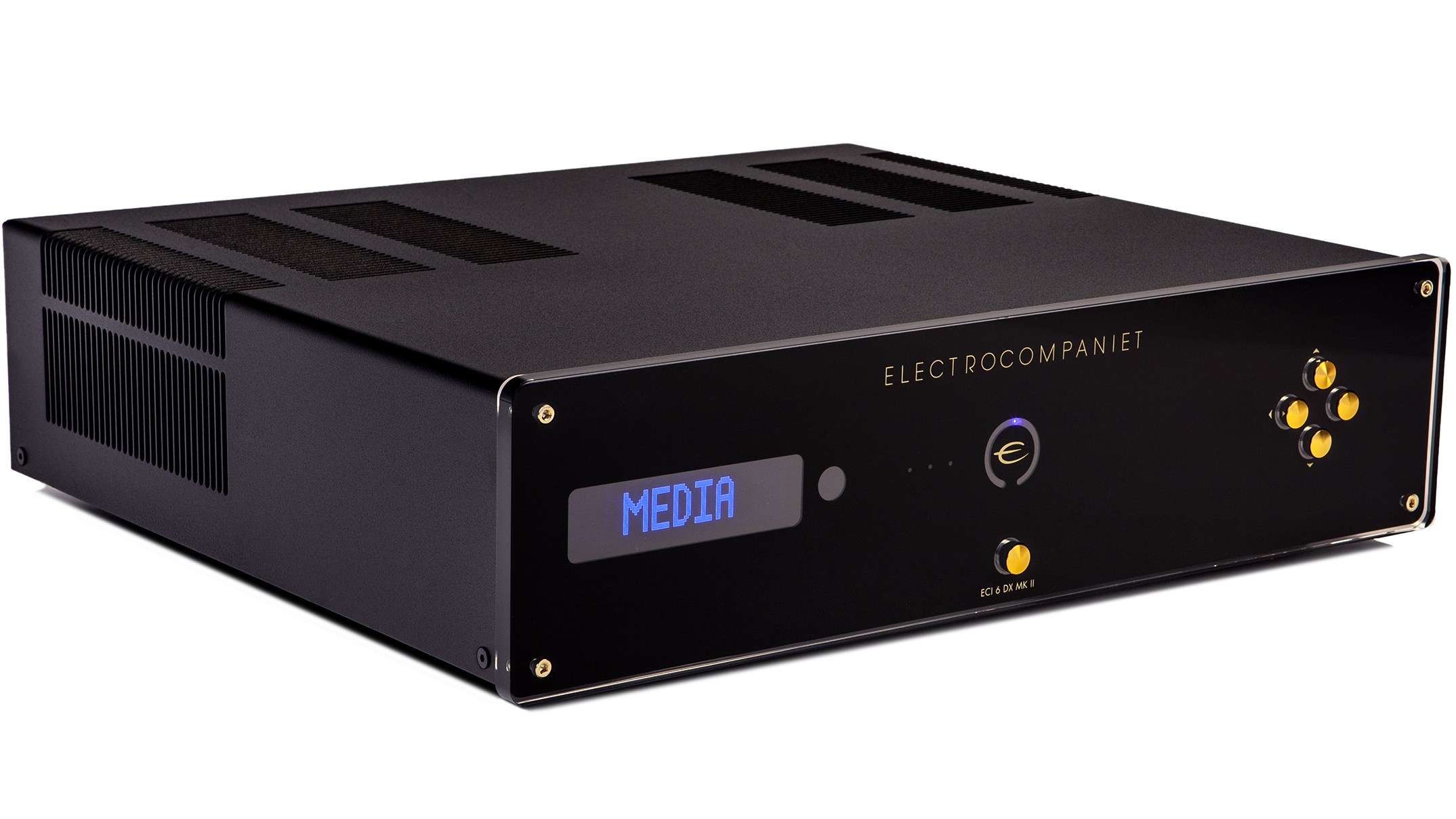
The Electrocompaniet ECI 6 DX MkII made Jaga Jazzist’s music sound absolutely fabulous. The sound of Martin Horntveth’s drum kit was stunningly good, particularly when he’s taking it out on his cymbals, which he does often. The sound of the saxophones on For All You Happy People is revelatory, but tear yourself away from concentrating on this to listen to the differently programmed sounds in the left and right channels and the singing sound of the guitars. The extraordinarily complex soundscape of this track was delivered perfectly by the ECI 6 DX MkII and, in the closing moments, you’ll hear what I said about the silence of the amplifier’s noise floor.
Swedenborgske rom (Track 5) is one of the most beautiful songs I’ve ever heard, and the wordless vocal ‘choir’ that comes in around two minutes in always makes me sigh. Jaga Jazzist uses synthesised sounds better than any band I’ve ever heard, and you’ll hear why listening to this track via the ECI 6 DX MkII. The purity of the sound is so sensational it’ll have you gasping for breath.
Listen to the way the Electrocompaniet still lets you hear the vocal line in the background even at the height of the crescendo. There’s another signature close-out too, where you can listen to the sound of the piano decay into the background. The ECI 6 DX MkII’s total command of rhythm and pace is more than amply demonstrated by Mikado, with its staccato cross-beats, percussion and plucked string effects. You can also hear the amplifier’s total control over the bass as well as the treble.
Perhaps best of all, all the great sound I heard from the Electrocompaniet ECI 6 DX MkII I heard irrespective of whether I was using its analogue inputs, its digital inputs or via wi-fi or Ethernet. To my ears, the only limitation on the quality of the sound you will hear from this Norwegian marvel will be the quality of the audio signal you deliver to it.
Final verdict
Electrocompaniet’s ECI 6 DX MkII is a rare find. It’s that classic case of a steel fist in a velvet glove. You really would not expect that such a powerful, great-sounding and full-featured multi-functional piece of electronics could be contained within such a modestly-sized chassis whose shiny black exterior does, in fact, remind one of velvet.
Full lab test results
Newport Test Labs’ measurements of the power output of the ECI 6 DX MkII show that Electrocompaniet is either flying very close to the wind with its specifications or has supreme confidence in its quality control procedures.
Rated by Electrocompaniet with a power output of 125-watts per channel into 8Ω, Newport Test Labs reported that its test sample delivered exactly this output at a test frequency of 20kHz, and just a little more (128-watts per channel) at a test frequency of 20Hz, when both channels were driven.
At a test frequency of 1kHz, the ECI 6 DX MkII maxxed out at 132-watts per channel, both channels driven into 8Ω. When only a single channel was driven, output crept up to more than 130-watts right across the frequency band.
The same performance was reprised when Newport Test Labs dropped the load resistance down to 4Ω. Electrocompaniet rates power output into this load as 200-watts per channel, both channels driven, and this is exactly the output the lab measured when using a 20kHz test signal.
Power output at 1kHz was 226-watts per channel and at 20Hz, 225-watts per channel. Again, there were handy increases in output when only a single channel was driven, as you can see from the tabulated results, as well as from the bar graphs.
When tested into 2Ω loads, the Electrocompaniet delivered more than 300-watts at all frequencies tested whether or not one or both channels were being driven, except when both channels were being driven with a 20kHz test signal, where Newport Test Labs measured power output at 220-watts per channel.
These results are very important, because most integrated amplifiers cannot drive 2Ω loads at all – at any power level – due to protection circuitry intervening. That the ECI 6 DX MkII can deliver such high power outputs right across the frequency range into such a low resistance is indicative of an outstanding output stage and an equally impressive power supply.
The Electrocompaniet also has an extraordinarily wide passband, with Newport Test Labs reporting that its frequency response extends from below 1Hz right up to 110kHz –3dB. The low-frequency 6dB down-point is also below 1Hz (so, essentially, d.c.) and down 6dB at 180kHz. Separation between the two channels was measured at 112dB at 1kHz, increasing to 115kHz at 20kHz. These are outstanding results.
Separation diminished at low frequencies, but was still an outstandingly good 75dB at 20Hz. Channel balance was also outstandingly good, with the lab measuring a minuscule 0.156dB difference between them at 1kHz. The same was true of inter-channel phase, with the Electrocompaniet returning a set of the best results I think I have ever seen for this test, with only 0.05° and 0.04° errors at 20Hz and 1kHz, and a 0.93° error at 20kHz. Most amplifiers return results that are no-where near as good for this parameter, particularly at 20kHz.
Signal-to-noise ratios were excellent, either referred to one watt, where Newport Test Labs measured 91dB A-weighted, or to rated output, where the lab measured 106dB A-weighted. Referenced to the higher level, the Electrocompaniet returned a result of 101dB even without the benefit of A-weighting.
Output impedance was measured at a very, very low 0.024Ω (at 1kHz) which means the ECI 6 DX MkII’s damping factor (DF) comes in at a very high 333.33. And no, my keyboard didn’t repeat, that’s five threes with a decimal point after the first three! It’s an outstandingly good result.
Square waves are an extraordinarily revealing test signal for any hi-fi component, but particularly so for amplifiers. A square wave will tell you the extent of an amplifier’s low-frequency response, its high-frequency response, how flat that frequency response is across its passband, the phase accuracy, stability and more, all in a single image. And it’s such a simple test. All that’s required is a square wave generator and an oscilloscope. I am constantly amazed it’s not a common test.
Newport Test Labs’ square wave testing of the ECI 6 DX MkII proved its performance to be outstanding! You can see that at 100Hz the square wave is perfectly flat-topped, which means excellent low-frequency extension and zero phase shift.
The 1kHz square wave is also perfectly flat-topped, so it’s equally good, despite being at ten times the frequency. It’s actually a perfect square wave, as if it had come straight from the square wave generator.
At 10kHz, we can see that the leading edge of the square wave is bending away from the vertical which shows that we’ve started to run into rise-time issues, as one would expect, but it’s still an excellent waveform, far better than most, indicating a very extended high-frequency response.
Newport Test Labs tests the stability of an amplifier by putting a 2µF capacitor in parallel with an 8Ω load and then asking the amplifier to drive this load with a 1kHz square wave. You can see the result in the last of the square wave sequences, and it shows excellent performance.
There’s a slight quarter-height overshoot that’s completely damped within three cycles and no other aberrations at all. This indicates that the Electrocompaniet will be completely stable into all loudspeaker loads, including difficult electrostatic designs.
Spectrum analysis of the Electrocompaniet ECI 6 DX MkII’s distortion with a 1kHz test signal is shown in Graphs 1 through 4 across two different power levels and two different loads.
Graph 1 shows performance at an output of one watt into an 8Ω load and you can see that there’s very little distortion and an impressively low noise floor. The second (good-sounding) distortion component is sitting at –93dB (0.00223% THD). There’s a third-order component at –111dB (0.00028% THD) then fourth- and sixth-order components at –120dB (0.0001% THD) and that’s it. Nothing else.
Equally importantly you can see that the noise floor across almost the entirety of the audio band is close to 130dB down, and that’s below a 1-watt reference. This is a super-quiet amplifier! Even the inevitable mains-related noise at low frequencies (extreme left of graph) is mostly more than 110dB down.
Graph 2 shows the Electrocompaniet ECI 6 DX MkII’s performance when load impedance is halved, down to 4Ω and you can see that it’s almost identical to the amplifier’s performance into the 8Ω load.
The second harmonic component has risen very slightly, to around –88dB (0.00398% THD), and the third and fourth harmonics have also crept up ever so slightly. The main difference is the appearance of a 5th-order harmonic, but at –119dB (0.00011% THD) down, it would be completely inaudible.
Graph 3 shows the Electrocompaniet ECI 6 DX MkII’s performance at an output of 20-watts per channel into 8Ω. As expected, distortion has increased, both in terms of the level of the individual components and the appearance of higher-order distortion components.
The good-sounding second harmonic is at –75dB (0.01778% THD) while the third is at –88dB (0.00398% THD). After that, the fourth and fifth components are both around 100dB down (0.001% THD) and the sixth and seventh at around –105dB (0.00056% THD). There are then only four higher-order components visible above the noise floor and all are more than 110dB down (0.00031% THD).
Graph 4 shows the Electrocompaniet ECI 6 DX MkII’s performance at an output of 20-watts per channel into 4Ω and although distortion has risen very slightly, the overall sonic signature is the same as for when the amplifier is driving an 8Ω load.
Newport Test Labs tests intermodulation using the CCIF twin-tone technique, using 19kHz and 20kHz test tones at the same level. Graph 5 shows the Electrocompaniet ECI 6 DX MkII’s performance when it’s delivering one watt into 8Ω.
You can see the two test signals right of graph centre. There are only two sidebands (at 18kHz and 21kHz) and both are around 110dB down, so around 0.00031% THD. This is excellent performance. Also excellent is that the unwanted difference signal, down at 1kHz, is 100dB down (0.001% THD). Also good.
The result of taxing the Electrocompaniet’s output stage by increasing power to 20-watts per channel is shown in Graph 6. Again the amplifier’s performance is excellent, though you can see there are slight increases in the level of the 18kHz and 21kHz sidebands as well as in the regenerated 1kHz signal but they’re still down at around –100dB (0.001% THD) and –96dB (0.00158% THD) respectively, so would be completely inaudible. The same would be true of the additional h.f. sidebands which are down at –115dB and –120dB.
The Electrocompaniet ECI 6 DX MkII’s frequency response across the audio band is shown in Graph 7 when it’s driving a purely resistive load (black trace) and a load that simulates the one that would be presented by a typical two-way bookshelf loudspeaker (red trace).
Note that the trace isn’t totally visually flat because of the extreme vertical scale of the graph, which Newport Test Labs deemed necessary in order to show the vanishingly small differences between the two measurements. The lack of differences means that the amplifier will ‘sound’ the same no matter what the impedance of the speakers it’s driving and that it will have total control over the back-emf of those speakers.
Electrocompaniet has designed an extremely wide-band amplifier that has very low noise, very low distortion (either THD or IMD) that will deliver very high levels of power into any conceivable load. Its ECI 6 DX MkII is a state-of-the-art design in every respect.
Australian Hi-Fi is one of What Hi-Fi?’s sister titles from Down Under and Australia’s longest-running and most successful hi-fi magazines, having been in continuous publication since 1969. Now edited by What Hi-Fi?'s Becky Roberts, every issue is packed with authoritative reviews of hi-fi equipment ranging from portables to state-of-the-art audiophile systems (and everything in between), information on new product launches, and ‘how-to’ articles to help you get the best quality sound for your home.
Click here for more information about Australian Hi-Fi, including links to buy individual digital editions and details on how best to subscribe.
